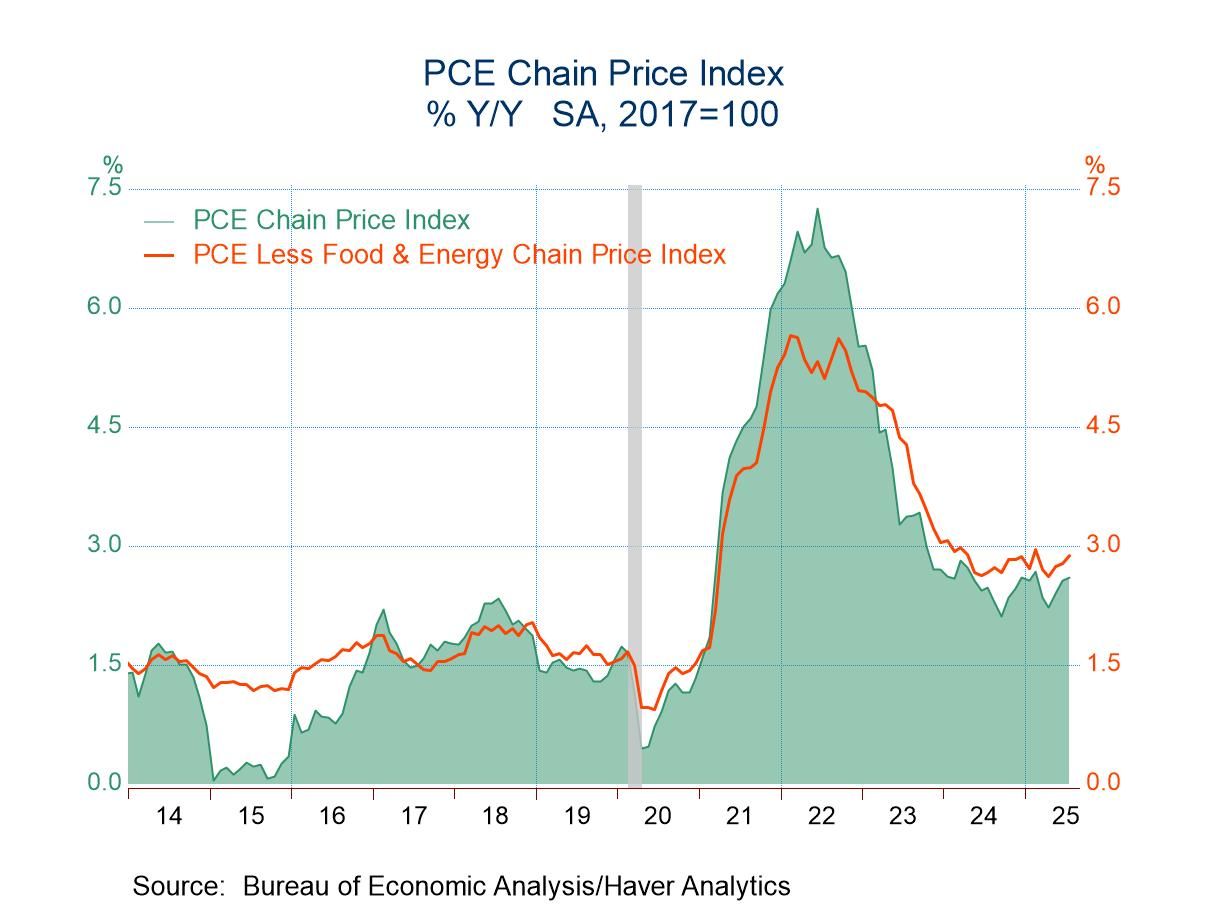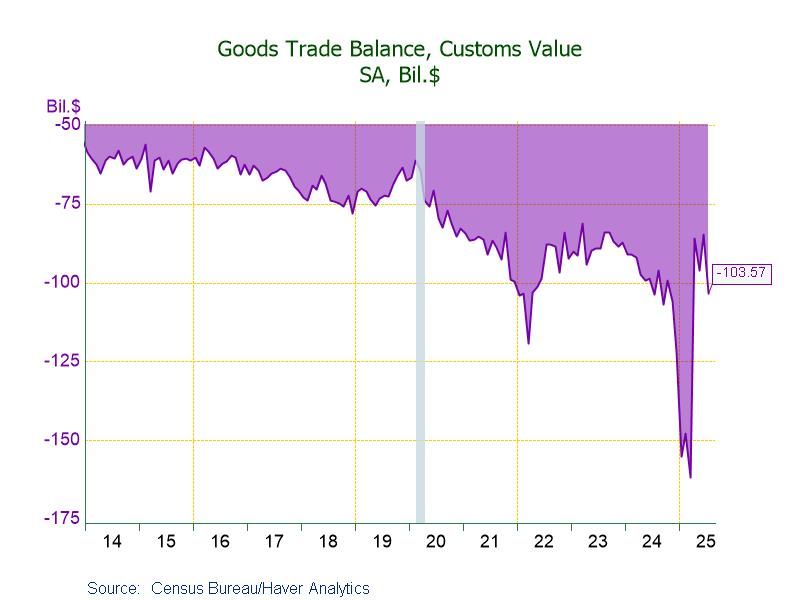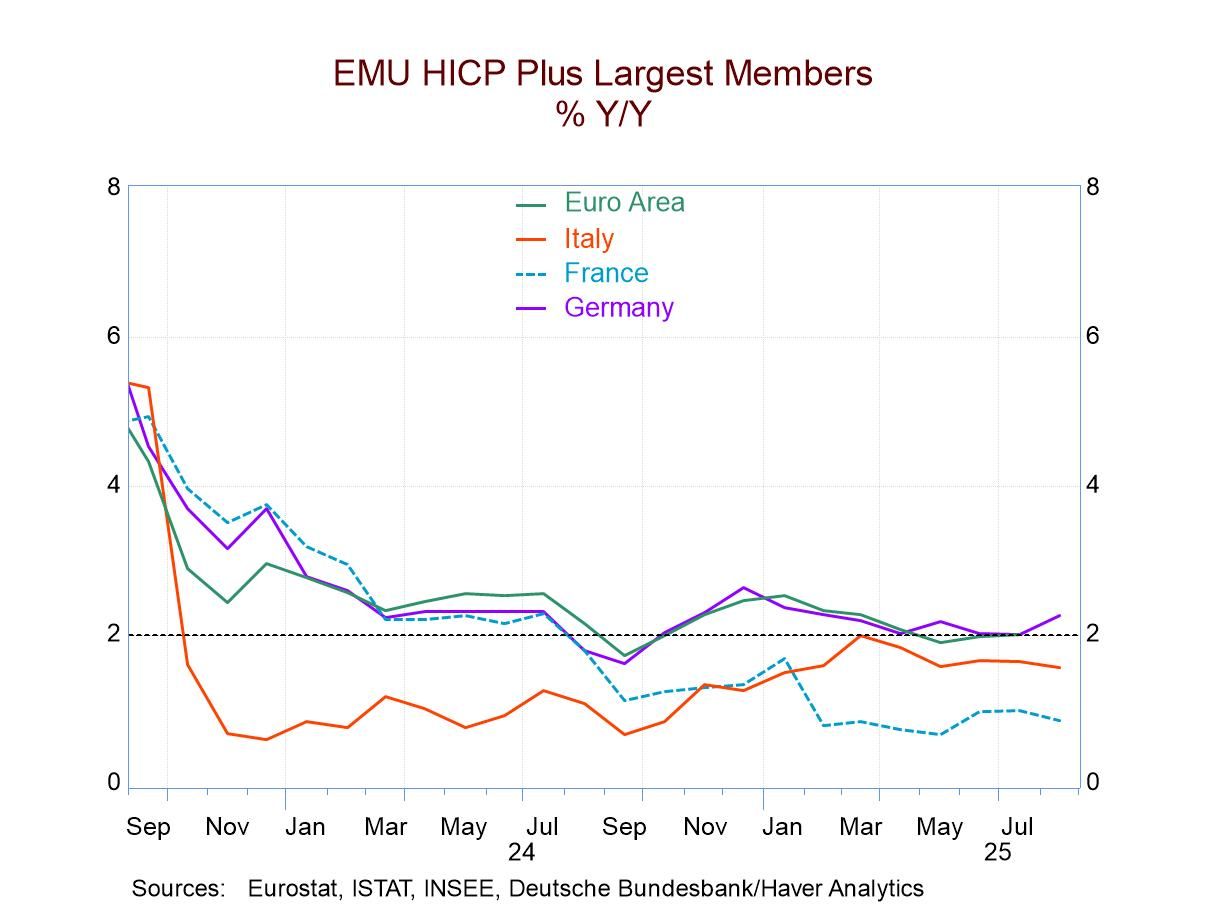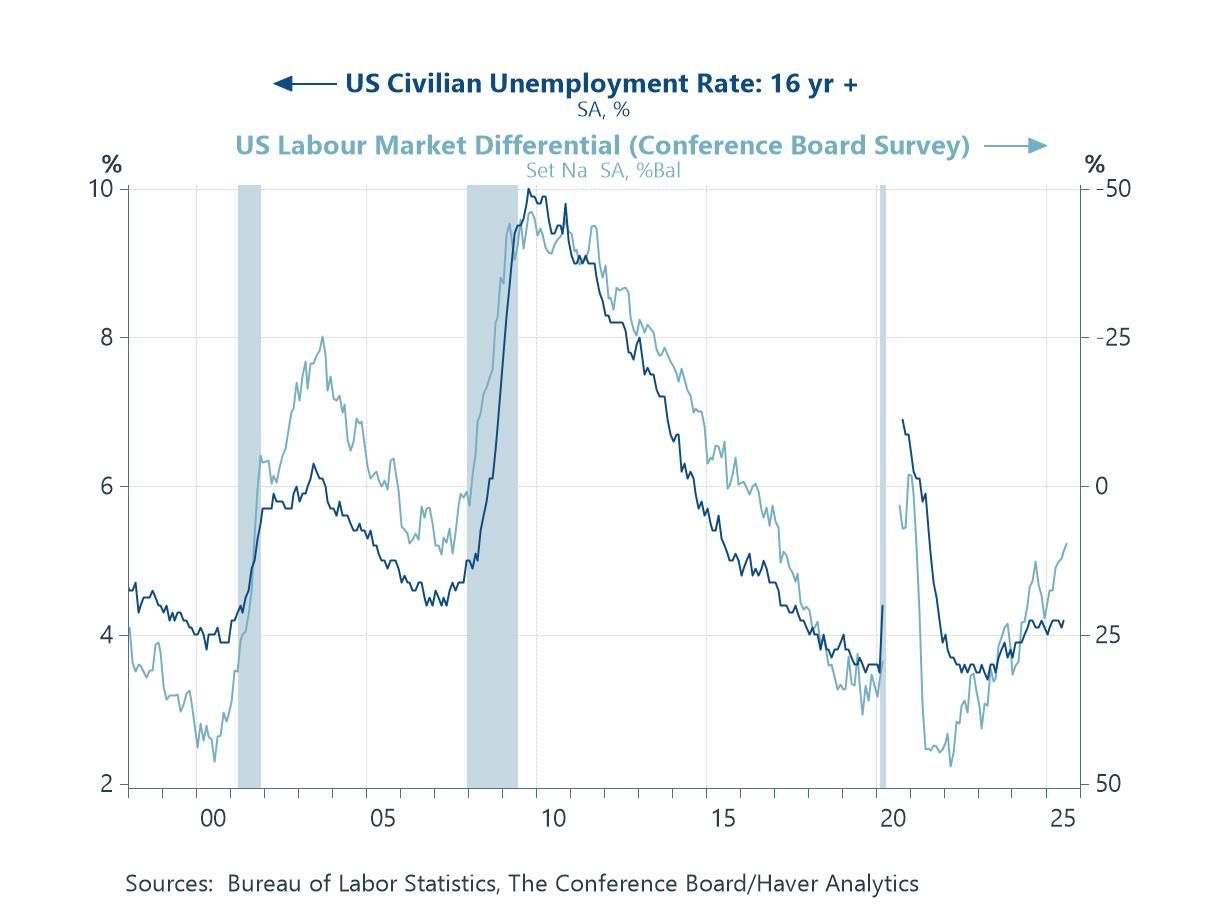 Global| Jul 02 2010
Global| Jul 02 2010Euro-Area PPI Drops Month To Month As Yr/Yr Rate Rises
Summary
The ECB sets its rate-targeting sights on the euro-area's HICP a consumer prices measure not on the PPI which is producer prices measure. But producer prices are showing some inflation escalation despite this month's result which say [...]
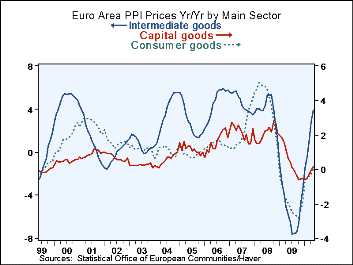 The ECB sets its rate-targeting sights on the euro-area's HICP a consumer prices measure not on the PPI which is producer prices measure. But producer prices are showing some inflation escalation despite this month's result which say the PPI fall month to month by a thin 0.1%.
The ECB sets its rate-targeting sights on the euro-area's HICP a consumer prices measure not on the PPI which is producer prices measure. But producer prices are showing some inflation escalation despite this month's result which say the PPI fall month to month by a thin 0.1%.
Euro-Area PPI inflation fell by 0.1% in May as the Yr/Yr rate rose to 3.1% from 2.8% in April. The sequential rates of prices change rose for capital goods and rose sharply for intermediate goods to stand at a 3-mo pace of 10.2% annualized in May. For consumer goods the speed of price increases backed off acceleration in three-months compared to six months but the three-month rate was still much higher than the 12-month rate.
PPI inflation is accelerating in Germany, France, and the UK; Italy just technically avoids being in a state of steady acceleration but the pressures are there. The inflation rates differ across these countries as Yr/Yr inflation is highest in the UK at 5.7% and lowest in France at 1.3%. The three-month pace is lowest in France at 3.4% and highest in the UK at 5.9%.
As the chart shows inflation, like many activity variables, fell in the recession and has made a strong recovery toward historic levels as the recession has ended. Intermediate goods inflation is more-or-less back at precession levels. But while the pace of price increase has improved, for consumer goods and capital goods the new pace of inflation in those sectors is still well below their respective paces in the pre-recession period.
Inflation is making a true comeback only in commodity prices where rising global activity has set speculators' teeth on edge. But these are data for May. In real time, July, the world is faced with concerns about growth and much of this price fluff in raw- or in relatively rawer- material's prices is giving way to some weakness. I don't think there is much in this report for the ECB to get upset about. And that is not just a statement about the second-tier status of this report.
Robert Brusca
AuthorMore in Author Profile »Robert A. Brusca is Chief Economist of Fact and Opinion Economics, a consulting firm he founded in Manhattan. He has been an economist on Wall Street for over 25 years. He has visited central banking and large institutional clients in over 30 countries in his career as an economist. Mr. Brusca was a Divisional Research Chief at the Federal Reserve Bank of NY (Chief of the International Financial markets Division), a Fed Watcher at Irving Trust and Chief Economist at Nikko Securities International. He is widely quoted and appears in various media. Mr. Brusca holds an MA and Ph.D. in economics from Michigan State University and a BA in Economics from the University of Michigan. His research pursues his strong interests in non aligned policy economics as well as international economics. FAO Economics’ research targets investors to assist them in making better investment decisions in stocks, bonds and in a variety of international assets. The company does not manage money and has no conflicts in giving economic advice.



